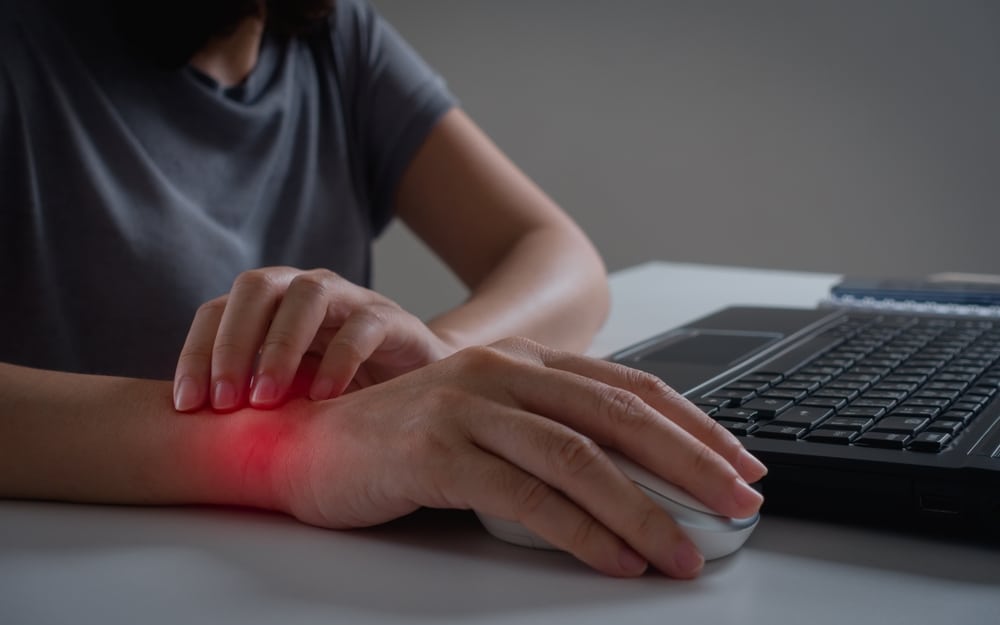Overview
Tennis Elbow, also known as lateral epicondylitis, is a common condition that causes pain around the outside of the elbow. Despite its name, you don’t have to play tennis to develop this condition – it can affect anyone who repeatedly uses their forearm muscles, especially in gripping or lifting activities. It is becoming increasingly prevalent with the yonder generation due to excessive gaming and phone/laptop useage.
While Tennis Elbow is often self-limiting – ie. it usually eventually resolves on it’s own without any longterm harm – early diagnosis and appropriate treatment can significantly improve symptoms and prevent chronic pain or dysfunction.
Anatomy of the Elbow
The elbow joint is formed by three bones:
- Humerus (upper arm bone)
- Radius and ulna (forearm bones)
Tennis Elbow occurs due to irritation or degeneration of the finger and wrist extensor tendons that attach to the lateral epicondyle; a bony prominence on the outer part of your elbow. The extensor carpi radialis brevis (ECRB) tendon is the one most commonly affected.
Tendons are what attache your muscles to your bones, which allows the joint to move.
Causes
Tennis Elbow is primarily caused by overuse and repetitive strain on the extensor tendons, which leads to microtrauma – tiny tears in the tendon where it merges with the muscle, and inflammation.
Common risk factors include:
- Repetitive wrist and forearm movements (e.g., tennis, squash, golf, or manual work like painting, carpentry, and typing).
- Improper technique or equipment – this might be a tennis racket that’s too heavy or a grip thats too small.
- Sudden increase in activity levels – such as playing a long tennis match, or having to paint your house, or doing excessive typing.
- Aging (most common in people aged 30-50 due to natural tendon degeneration).
Symptoms
Syptoms can vary from each individual. They tend to start off fairly mildly and then gradually get worse over a few weeks.
Pain and tenderness – especially on the outer elbow, exacerbated when gripping or lifting objects.
Weakness in your grip strength – making it difficult to hold items like a coffee cup or shake hands.
Pain radiating down into the forearm towards the wrist. The muscles in the forearm may also feel quite sore to touch.
Worsening pain when extending your wrist -, particularly during wrist twisting movements like opening jars.
Diagnosis
It’s important to get an accurate and timely diagnosis from a medical professional. The sooner you can get this type of injury treated, the less likely it is to give you longstanding problems.
Clinical Examination: Checking for tenderness at the lateral epicondyle and assessing wrist and elbow movements.
Resisted Wrist Extension Test: Pain when extending the wrist against resistance suggests Tennis Elbow.
Imaging:
- Ultrasound or MRI scan to assess any localised tendon damage and to help rule out other conditions.
- X-ray – this is used if bony abnormalities, fractures, or arthritis are suspected.
Treatment Options
Non-Surgical (Conservative) Treatment
Conservative management is always the first step when treating tennis elbow. There are a number of options available to you, which your specialist will discuss with you in detail and make sure that you have the best management plan in place.
Rest & Activity Modification: Avoid repetitive gripping and heavy lifting.
Pain Management:
- Ice therapy – using ice can helop to reduce inflammation.
- Anti-inflammatory medications (NSAIDs) – medication such as ibuprofen can be extremely beneficial in trearting inflammation and allowing you to do some specific rehab exercises. You should always seek medical advice before taking any medication.
Bracing or Strapping: An elbow strap or brace can help offload the affected tendon and provide significant pain relief, especially while trying to do activities with the affected arm.
Physiotherapy: This is the most important element of your treatment plan. It’s improtant to get a referral to physiotherapy as soon as possible.
These are a few treatment examples that they may include:
- Stretching and strengthening exercises to improve tendon function.
- Eccentric exercises (lengthening the muscle while contracting).
- Shockwave therapy to stimulate the healing process
Corticosteroid Injections: These can provide excellent short-term relief to enable to you participate in your rehabiliation, but are not recommended for long-term management.
Platelet-Rich Plasma (PRP) Therapy: These injections use growth factors from your own blood to promote tendon healing.
Surgical Options
Surgery is very rarely required but may be considered if symptoms persist for 6-12 months despite conservative treatment, and your mental health, job and sleep are being significantly affected.
The two main surgical options include:
Open or Arthroscopic Tendon Debridement (Tendon Release Surgery)
- The surgeon removes damaged tendon tissue and reattaches healthy tendons to the bone.
- Can be performed as a minimally invasive (keyhole) arthroscopic procedure or through an open incision.
Recovery:
- Mild exercises start within a few weeks.
- Full recovery can take 3-6 months, depending on rehabilitation.
Percutaneous Tenotomy (Needle Fenestration)
- A minimally invasive technique where a needle is used to stimulate healing in the damaged tendon.
- This provides a faster recovery time than with traditional surgery.
Outcomes & Recovery
- Over 90% of patients improve with conservative treatment.
- Surgical success rates are 85-95%, with pain good relief and restored function.
- Rehabilitation after surgery is incredibly important, in order to regain strength and mobility.
Questions & Answers
Can I continue playing sports or working with Tennis Elbow?
It depends on severity. Light activity modifications are encouraged, but repetitive strain should be avoided. A physiotherapist can help you adjust movements to prevent worsening symptoms.
How long does Tennis Elbow take to heal?
Most mild to moderate cases improve within 6-12 weeks with conservative treatment. Chronic cases may take 6-12 months.
Is surgery the best option for Tennis Elbow?
Surgery is only recommended when all non-surgical treatments have failed after 6-12 months, and the symptoms are affedcting your wellbeing and daily life. Most patients recover well without surgery.
What are the risks of surgery?
Possible risks include infection, stiffness, nerve injury, or incomplete pain relief, but these are very uncommon with modern surgical techniques.
Can Tennis Elbow come back after treatment?
Yes, recurrence is possible, especially if risk factors (e.g., repetitive strain, poor ergonomics) are not addressed. Strengthening and proper technique can reduce recurrence risk.




